



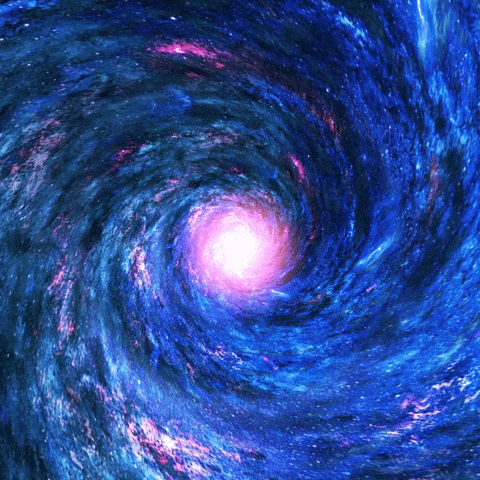
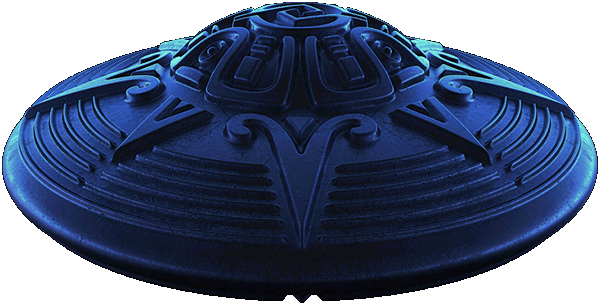

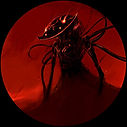
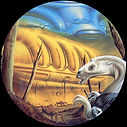

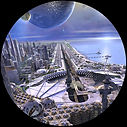

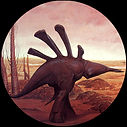


ROSWELL TRUTH OR STORYS

The Roswell incident is a conspiracy theory which alleges that the 1947 United States Army Air Forces balloon recovered near Roswell, New Mexico was actually a crashed extraterrestrial spacecraft. Operated from the nearby Alamogordo Army Air Field and part of the top secret Project Mogul, the balloon was intended to detect Soviet nuclear tests.[1] After metallic and rubber debris were recovered by Roswell Army Air Field personnel, the United States Army announced their possession of a "flying disc". This announcement made international headlines, but was retracted within a day. Obscuring the true purpose and source of the crashed balloon, the Army subsequently stated that it was a conventional weather balloon.
In 1978, retired Air Force officer Jesse Marcel revealed that the Army's weather balloon claim had been a cover story, but speculated that the debris was of extraterrestrial origin. Popularized by the 1980 book The Roswell Incident, this speculation became the basis for long-lasting and increasingly complex and contradictory UFO conspiracy theories, which over time expanded the incident to include governments concealing evidence of extraterrestrial beings, grey aliens, multiple crashed flying saucers, alien corpses and autopsies, and the reverse engineering of extraterrestrial technology, none of which have any factual basis.
In the 1990s, the United States Air Force published multiple reports which established that the incident was related to Project Mogul, and not debris from a UFO. Despite this and a general lack of evidence, many UFO proponents claim that the Roswell debris was in fact derived from an alien craft, and accuse the US government of a cover-up. The conspiracy narrative has become a trope in science fiction literature, film, and television. The town of Roswell leverages this to promote itself as a destination for UFO-associated tourism.

What really happened in the Roswell UFO incident?
Did a UFO really crash-land in Roswell, New Mexico? What are the facts behind ufology's most famous case?
Magazine gift subscriptions - from just £18.99 every 6 issues. Christmas cheer delivered all year!
Published: January 24, 2024 at 12:38 pm
July 2022 marks the 75th anniversary of the Roswell incident, where believers say an extraterrestrial spacecraft crashed in the New Mexico desert, with debris – and possibly alien bodies – being recovered by the US government, marking the beginning of a decades-long cover-up.
What really happened at Roswell, and why does this mystery still attract such interest and controversy, decades later?
Read our interview with historian Greg Eghigian on the history of flying saucer and UFO reports.
Read more:
The Roswell UFO story begins
The Roswell UFO incident begins on 24 June 1947 when pilot Kenneth Arnold was flying over the Cascade Mountains of Washington State in the US, helping to search for a crashed military aircraft.
He saw 9 crescent-shaped objects flying in formation at a height of around 3km (10,000ft) and an estimated speed of approximately 1,900km/h: seemingly impossible at the time.
Arnold described the jerky movement of the objects as being, "like a saucer would if you skipped it over water."
The media got hold of the story, coined the phrase ‘flying saucer’ and a modern mystery was born.
Since the Roswell UFO incident, the term 'flying saucer' has now entered our common vocabulary. Credit: KTSDesign / Science Photo Library
This wasn’t the first sighting of what we now call a UFO (unidentified flying object), but it was the first to capture the public imagination, making news headlines around the world.
More reports were received, suggesting these sightings were commonplace but had previously gone unreported.
As this ‘summer of the saucers’ progressed, media coverage intensified to a point of near-hysteria, until matters came to a head and it seemed the mystery might be resolved.
Debris discovered at Roswell
On 7 July a local rancher named ‘Mac’ Brazel contacted the sheriff in Roswell to say he’d discovered strange debris spread over the ranch.
He’d found it days earlier but hadn’t thought much of it until the stories about flying saucers emerged.
Thinking there might be a connection and guessing something might have crashed during a recent storm, he alerted the authorities.
He’d brought some samples of the debris, and when the sheriff contacted the nearby Army airbase, intelligence officer Jesse Marcel went to the crash site with Brazel and recovered more debris.
At Fort Worth Army Air Field, Major Jesse A. Marcel holds foil debris from Roswell, New Mexico during the so-called UFO incident. Courtesy, Fort Worth Star-Telegram Photograph Collection, Special Collections, The University of Texas at Arlington Library, Arlington, Texas
The military base’s public information officer, Walter Haut, worked with a local journalist to release a newswire report about the event:
"The many rumors regarding the flying disc became a reality yesterday when the intelligence office of the 509th Bomb Group of the Eighth Air Force, Roswell Army Air Field, was fortunate enough to gain possession of a disc through the cooperation of one of the local ranchers and the sheriff’s office of Chaves County.
"The flying object landed on a ranch near Roswell sometime last week. Not having phone facilities, the rancher stored the disc until such time as he was able to contact the sheriff’s office, who in turn notified Major Jesse A Marcel of the 509th Bomb Group Intelligence Office.
"Action was immediately taken and the disc was picked up at the rancher’s home. It was inspected at the Roswell Army Air Field and subsequently loaned by Major Marcel to higher headquarters."
The news sent shockwaves around the world, but it’s the iconic front page headline of the local Roswell Daily Record that’s best-known: 'RAAF Captures Flying Saucer on Ranch in Roswell Region'.
The front page of the Roswell Daily Record from 9 July 1947 mentions a 'flying saucer'. Credit: Roswell Daily Record
US military u-turn
Within 24 hours there was a stunning development.
In a complete reversal of their position regarding the Roswell debris discovery, the US military said a mistake had been made, and that the ‘flying saucer’ was a crashed weather balloon.
The Roswell Daily Record printed a follow-up story that read ‘Gen. Ramey Empties Roswell Saucer’ – General Roger Ramey being the Commander of the Eighth Air Force, to whose Fort Worth headquarters the debris had been flown.
A series of photos were published showing Ramey, Marcel, and other military personnel holding some of the debris. Sure enough, it looked pretty uninspiring and was entirely consistent with the ‘tinfoil’ mentioned by the military in their explanation.
At Fort Worth Army Air Field on 8 July 1947, Brigadier General Roger M Ramey (left) and Colonel Thomas J Dubose, identify metallic fragments found at Roswell as pieces of a weather balloon. Credit: Bettmann / Getty Images
Nowadays, with the 24/7 news cycle, internet, social media and an activist community of UFO researchers, such a claim – followed by such an about-turn – would no doubt cause controversy and conspiracy theories on a massive scale.
This is especially true given that the 509th Bomb Group was the only atomic bomb-capable squadron anywhere in the world at the time.
It’s hard to imagine these elite personnel – many of whom were familiar with weather balloons – being fooled in this way.
But post-war America was very different from today, and in that calmer, more trusting-of-authority era, the weather balloon explanation was almost universally believed.
While interest in flying saucers and UFOs went from strength to strength, Roswell disappeared from the narrative.
The Roswell UFO plot thickens
Nuclear physicist Stanton T. Friedman giving a talk about UFOs in 2007. Photo By Krissy Krummenacker / MediaNews Group / Reading Eagle via Getty Images
The story of the Roswell UFO crash was rediscovered in 1978 by nuclear physicist-turned-ufologist Stanton T Friedman, who was tipped off that a retired military man had an interesting story to tell: none other than Jesse Marcel.
Marcel told Friedman the weather balloon explanation had been a cover story and that the photos had been staged, with weather balloon debris being substituted for the real wreckage.
He claimed that everyone involved in the retrieval was clear the object had indeed been an extraterrestrial spaceship.
Over the next few years, researchers dug deeper into the mystery, tracking down many of the key players, locating additional witnesses and trying to piece together what happened.
A number of retired military personnel who’d been based at Roswell corroborated some elements of the crashed spacecraft narrative and added their own details.
Sceptics argued that they were simply telling the researchers what they wanted to hear, writing themselves into the story either as a prank, or because they were seeking attention.
Either way, books were written, documentaries, drama series and a movie were made, and the idea of a UFO crash became so embedded in pop culture that even if people had no particular interest or belief in UFOs, there was a good chance they had heard of Roswell.
Roswell incident in the 1990s
Area 51 is a secretive US military facility that is the subject of many alien conspiracy theories. Credit: Brian P Irwin / Getty Images
By now fact and fiction were getting blurred, and the narrative was incorporating other UFO conspiracies.
It was claimed, for example, that the wreckage had been taken to Area 51 (a remote facility in the Nevada desert where the US developed and test-flew aircraft like the U-2, the SR-71 Blackbird, and stealth fighters and bombers), where attempts were made to reverse-engineer the alien craft.
Such storylines would subsequently turn up as plots in movies like Independence Day and TV shows like The X-Files.
In 1995 a video emerged purporting to show an ‘alien autopsy’ which, it was implied, was connected to Roswell.
The famous 'alien autopsy' film released in 1995 was later confirmed as being a hoax.
The film was a fake, of course, but it generated international news, with the hoax footage subsequently forming the basis of a comedy film starring TV presenters Ant and Dec.
During the 1990s the US government succumbed to media and public pressure, launching their own retrospective investigation and publishing two reports, the first in 1994 and the second in 1997.
The conclusion was that the culprit was indeed a high-altitude weather balloon, but that it had been carrying equipment designed to search the atmosphere for evidence of Soviet nuclear tests as part of something called Project Mogul.
Sceptics say the highly-classified nature of this monitoring project explains any apparent oddities in the handling of the incident.
It’s even possible that the flying disc story was a local initiative designed to throw the media off the true story, with higher command subsequently overruling the plan and saying it was a weather balloon.
The second government report, the release of which coincided with the 50th anniversary of the incident, was arguably guilty of over-egging the pudding.
None of the original reports had mentioned alien bodies, and even Jesse Marcel denied this aspect of the story, which only emerged later.
The city of Roswell eventually learned to embrace its UFO legacy. Credit: mixmotive / Getty Images
But the United States Air Force felt they had to address the issue and their convoluted theory suggested that people had conflated the 1947 crash with tests in the 1950s, in which anthropomorphic crash test dummies had been dropped to test the efficacy of military parachutes.
Even for neutral recipients, this was a stretch, and was met with predictable derision.
By this time, however, the story of Roswell had become the UFO community’s flagship case.
The city of Roswell had embraced its heritage, a UFO museum had been opened and annual events were held to mark the occasion.
Roswell now has such name recognition that several US presidents have alluded to the UFO incident in speeches and interviews, usually making light-hearted quips, but sometimes – seemingly – playing it sufficiently straight to make people wonder.
Roswell in the present day
Roswell New Mexico has fully embraced its credentials as the most famous city in UFO folklore. Credit: Denis Tangney Jr / Getty Images
Fast forward to now. The topic of UFOs has been steadily transitioning from fringe to mainstream over the last few years – at least in the US.
This process started in December 2017 with two related scoops from The New York Times: firstly, the revelation that the US Navy had videos of UFOs taken from some of its fast jets, and secondly, the existence of the Advanced Aerospace Threat Identification Program (AATIP).
The exact role of AATIP is still the subject of dispute, but the Pentagon confirmed that it did – in part – study UFO data.
This is significant because previously the US government said that official interest in the topic ceased at the end of 1969, when an old Air Force program, Project Blue Book, had been terminated.
The New York Times story was seized upon by Congress, and classified briefings followed, with a number of high-profile politicians – Republicans and Democrats alike – speaking out on the issue.
In summer 2021 the Office of the Director of National Intelligence published an inconclusive preliminary assessment that stated most of the sightings studied remained unexplained.
More recently, multiple UFO-related provisions were included in the Defense Bill, requiring the Department of Defense, the military and the intelligence community to work together to resolve the mystery.
U.S. Deputy Director of Naval Intelligence Scott Bray (left) and Under Secretary of Defense for Intelligence and Security Ronald Moultrie (right) testify before a House Intelligence Committee subcommittee hearing on UFOs at the U.S. Capitol on 17 May 2022. Photo by Kevin Dietsch/Getty Images
Congress wants to know if these mystery objects are drones operated by an adversary such as Russia or China, or something else.
Seemingly, nothing has been taken off the table, and this has sent the UFO community into a predictable frenzy.
All this means that the 75th anniversary of the Roswell incident is significant.
It isn’t just an opportunity for the local community to put on its usual parade and conference.
Rather, Roswell is in the spotlight again, representing a sort of ‘ground zero’ of the UFO phenomenon.
As the event passes from living memory into history, we may never resolve the mystery, but the story speaks to our wider fascination with one of the biggest and most profound questions we can ask: whether or not we’re alone in the Universe.










The Truth Is (Still) Out There In 'UFO Capital' Roswell, New Mexico
Two big green aliens greet customers at the Dunkin Donuts drive-though, and down the street, silver E.T. sculptures sit outside a flying saucer-shaped McDonald's. Welcome to Roswell, N.M., the "UFO capital of the world" — site of a 1947 mysterious aircraft rash and alleged government cover-up.
National
How UFO Sightings Went From Conspiracy Theory To A Serious Government Inquiry
Sci-fi enthusiasts, ufologists and conspiracy theorists have been eagerly awaiting a government report, due this month, detailing a Department of Defense investigation into Unexplained Aerial Phenomena.
Any hopes that the report would confirm alien visitors to our atmosphere have been dashed, according to reporting by The New York Times and confirmed by NPR through a U.S. senior official. Even so, ET-centric businesses in Roswell hope interest in the new report will lead to a boost in tourism.
An alien diorama on display at the International UFO Museum and Research Center, where visitation is up 20% from 2019
Kirk Siegler/NPR
At the International UFO Museum and Research Center, visits are already up 20% from 2019. Some of that is because of last year's closures due to COVID-19, but belief in UFOs has skyrocketed in recent years.
"If you go back in time and if you brought up the idea of UFOs or aliens, people didn't want to talk about it. They thought you were looney, but these days it has changed," says Frank Kimbler, who excavated some of the artifacts on display from the 1947 crash site. He had hoped the new report would admit the existence of ETs and lead to an era of positive exploration — as outlined in the TV series Star Trek.
Frank Kimbler is a geology professor and ufologist whose artifacts from the 1947 crash site are on display at the International UFO Museum and Research Center.
Kirk Siegler/NPR
Museum visitor and UFO enthusiast Ethan Anderson first got interested in aliens after attending Roswell's annual UFO Festival, and would love to know more about our cosmic neighbors. Still, he doesn't trust the government to share what information it may have with the public.
"If you really have technology that's so great, you shouldn't hide it from people," he says, convinced of a government cover-up of alien tech.
"The government can't admit that there are extraterrestrials, because if they do, that'll open up a whole keg of worms," says Dennis Balthaser, a longtime Roswell UFO tour guide who has spent 35 years researching UFOs. "If they've been lying about this, what else have they been lying about? I just want to know the truth, but this will just be more more excuses."
Balthaser, who turns 80 this year, doesn't believe the truth about aliens will come out in his lifetime, but says at least the report "might generate money for the city."
Depictions of extraterrestrial life abound in Roswell.
Kirk Siegler/NPR
Tourist Vita Gartung hadn't heard of the report, but has her mind made up no matter what's in it. "I have an alien tattoo," explains Gartung, who is visiting from Kansas. She figures the U.S. government already knows there is other life in our universe — and that life might already be watching us with curiosity.
"If they wanted to take us out they could, but I think we're doing a good job ourselves, so they probably will leave us alone," Gartung says.
Or, just maybe, they'll join human tourists and visit Roswell this summer, too.



The Roswell incident: Did the US Government cover up an alien crash in 1947? The real history that challenges the conspiracy
During the summer of 1947, flying saucers were capturing the world’s imagination against a backdrop of rising tensions between the United States and the Soviet Union. Then, a mysterious incident in Roswell, New Mexico, laid the foundations of a supposed cover-up – the full picture of which only came into focus decades later. In the second season of our Conspiracy podcast series, Rob Attar speaks to David Clarke and asks if visitors from outer space really did make contact at Roswell
Published: May 16, 2024 at 12:07 PM
In the years immediately following the end of the Second World War, a spate of observations of mysterious airborne objects began to accumulate around the globe.
Similar Unidentified Flying Objects (UFOs) had been described by Allied pilots during the Second World War (the so-called ‘foo fighters’).
Alongside such aerial phenomena, the Nazi regime’s experimentation with rocket-propelled missiles (the V1 and V2 programmes), and its post-war appropriation by the Allies, launched a post-war revolution in weapons technology.
Amid rising Cold War tensions between the United States and the Soviet Union, anxiety over a missile gap soon led to an arms race, while wild rumours about the other’s technological innovation soon became rife.
But in 1947, these Earthly fears were eclipsed by a seemingly extraterrestrial ‘visitation’, which brought the city of Roswell, New Mexico, to the world’s attention.
The conspiracy theory: the US government covered up the crash of an alien spacecraft
In late June 1947, W W ‘Mac’ Brazel, a rancher living in New Mexico, discovered an unusual debris field on his land near Roswell.
Days later, he alerted the local authorities, who in turn notified Roswell Army Air Field (RAAF). Military personnel were dispatched to the location whereupon they supposedly recovered material from a damaged extraterrestrial spacecraft and even the bodies of its alien crew.
The base issued a statement confirming that a “flying disc” had been recovered in the vicinity and “inspected at the Roswell Army Air Field”. Yet the following day a correction was released that clarified the debris was in fact a downed weather balloon.
-
Read more | Why we should remember the Roswell incident
Decades later, in 1978, the so-called ‘Roswell incident’ returned to the spotlight. According to a whistle-blower who had been involved in the operation, the weather balloon story was a cover-up. Photographs of the balloon wreckage had been carefully staged, while the actual spacecraft was spirited away for investigation. At the same time, everyone connected to the incident was sworn to silence.
Conspiracy: A HistoryExtra podcast series
Member exclusive | Was the moon landing faked? Did Shakespeare actually write his plays? Were the pyramids built by aliens? Expert historians offer their perspectives on history's biggest conspiracy theories.
Researchers tracked down several witnesses who corroborated that a crashed alien spaceship had indeed been salvaged and taken to the enigmatic Area 51 in Nevada where technicians had subsequently reverse-engineered it for the US military.
Not only that, but it was said that extraterrestrial beings had been retrieved from the crash site and had been subjected to autopsies.
What is the source of the theory?
To understand the origins of the Roswell incident, historian and broadcaster, David Clarke, believes it is necessary to begin two weeks earlier on 24 June 1947 and over 1,000 miles northwest.
“Kenneth Arnold, who was a private pilot, was out flying a small aircraft over the Cascade [Range] mountains in Washington state,” says Clarke, who was speaking on our Conspiracy podcast series. “As he was flying towards Mount Rainier, in the distance he saw what he described as a formation of ‘strange aircraft’. They were flying in echelon formation, the way that geese or ducks [do].”
Arnold reckoned that these strange vessels, which he later described as ‘batwing-shaped’, were travelling at supersonic speed. Incidentally, the sound barrier would not be broken until 14 October later that same year by US Air Force officer, Charles Yeager.
“He radioed Yakima airbase and when he landed … [it had been] transmitted all around the United States that this guy had seen some weird objects in the sky. He was surrounded by newspaper reporters,” says Clarke.
His description of the objects’ movement as being akin to a saucer skipping over a pond caught journalists’ imagination, who coined the term ‘flying saucer’.
“The story went viral to use a modern expression,” says Clarke.
“Within 48 hours of Kenneth Arnold reporting what he’d seen, flying saucers were on the newswires across the United States, across North America and Europe. And people started seeing and reporting saucer-shaped flying objects in the sky”.
It was during this craze that the RAAF dispatched Major Jesse Marcel and Captain Sheridan Cavitt to inspect the debris found near Roswell.
But whereas Cavitt maintained that the wreckage was ostensibly ‘normal’, Marcel convinced himself “that it was something very, very unusual and not something that was manufactured in the United States”, explains Clarke.
The reasons why the theory of the Roswell Incident took hold
The airbase’s correction, insisting that the discovery was in fact that of a weather balloon, negated the idea that something more peculiar had been found. That summer in New Mexico soon faded from popular memory – at least for the time being.
“I’ve got a huge collection of books on UFOs and flying saucers from the 1950s up to the present,” says Clarke, “the Roswell incident is not mentioned in any of those books and articles and magazines during the 1950s, during the 1960s”.
Decades later, after trust in the US government had been badly damaged in the wake of the JFK assassination and the unpopular Vietnam War, a more cynical audience was primed to reconsider the official narrative around the Roswell incident.
Clarke believes that this context is the reason why the 1980 book The Roswell Incident by Charles Berlitz and William Moore was so successful in introducing the idea of a government cover-up.
“They went and re-interviewed some of the people who were there at the time. Jesse Marcel, for instance – there’s no other way to describe him – he was a UFO believer. He bought into the idea that flying saucers were craft from outer space,” says Clarke.
According to conspiracists like Marcel, the cover-up even entailed intimidating would-be whistle-blowers with murder: “‘Bullets are cheap’ was the phrase that was used,” explains Clarke.
“There are people who worked in the morgue at Roswell [who] said that they remembered this truck turning up with armed guards and these small bodies of creatures being offloaded”.
By the end of the 20th century, the Roswell incident had acquired an iconic status within the ufology community but also within popular culture generally. During the 1990s, the conspiracy was woven into the X-Files TV drama series and the blockbuster movie, Independence Day.
“That shows how much it’s become a part of the collective American imagination – almost to rival the JFK conspiracies,” says Clarke.
The evidence that debunks the Roswell Incident
The UFO ‘wreckage’ that Brazel came across on his ranch – and later confirmed by Cavitt – consisted of balsa wood, tinfoil, metal strips and other detritus.
As was officially established that summer, these materials, though certainly incongruous to the location in which they were found, were the remnants of a high-altitude balloon.
Clarke points out that “there was a cover-up in some respects, in that when they announced that this thing that had been found was just a weather balloon that wasn’t true because it wasn’t just a weather balloon, it was [part of] a top secret balloon experiment”.
In 1994, the US Congress launched an official investigation into the events of summer 1947. Its conclusions formed part of a two-volume report that revealed that a highly clandestine operation code-named ‘Mogul’ had been conducted at the time from Alamogordo Army Air Field, less than 150 miles west of Roswell.
“The US Navy and the CIA were launching enormous balloon trains from Alamogordo. Everyone will remember at the beginning of 2023, the Chinese spy balloon that was shot down by the US Air Force. A very similar thing was going on in 1947,” says Clarke, citing a recent incident that sparked speculation about alien aircraft visiting Earth.
With the Cold War just getting underway at the time, the US was keen to establish whether the Soviets were conducting nuclear tests.
“They were sending these enormous balloons up,” explains Clarke, “and they were riding the jet stream across the Atlantic, and they had a gondola underneath with cameras inside and a radiosonde where they could track the balloons”.
“One of these balloon trains in the logbook from Alamogordo was lost in the desert shortly before the debris [at Brazel’s ranch] was found,” says Clarke – though he stresses that a direct link between the two cannot be definitively made despite the circumstances.
A few years later, in 1997, the US Air Force published another report. One of its findings attributed the reports about humanoid ‘creatures’ turning up at facilities in and around Roswell to false memories.
According to Clarke, the report “tried to explain where some of the ideas about bodies being retrieved from the desert came from”.
As part of that later investigation, “it turned out that they were actually throwing dummies from aircraft over the desert”.
These tests were part of a secret programme to assess the effect on the human body if pilots ejected from aircraft and fell from high altitudes.
For Clarke, the Roswell incident also bears many of the age-old tropes about celestial visitors descending to Earth in a revelatory fashion.
“Effectively you could see the aliens in the flying saucer as being representative of gods or angels coming to give us their sacred knowledge. And they always crash in a remote area. They’re never crashing in Tunbridge Wells or anywhere like that. It’s always some remote area of desert”.
More than this, Clarke asserts that Roswell became an urban legend for the atomic age and that its DNA is typical of American folklore.
He cites the case of Aurora, Texas – where, in 1897, a UFO allegedly collided with a windmill. The locals “retrieved the body of this Martian pilot, buried it in the local cemetery, and they retrieved bits of metal from this airship that had hieroglyphics on it”.
Clarke says that this was in fact a hoax concocted to attract visitors to the small town after the railway had bypassed it, and he notes that the story is almost “a carbon copy of the Roswell incident”.
Perhaps the most expedient angle on Roswell is that the longevity of this conspiracy theory serves the US military’s interests and may even explain why some ex-military and ex-intelligence personnel have gone on record to suggest that extraterrestrials crashed there in 1947.
For example, ongoing rumours about Area 51 and the back-engineering of otherworldly technology makes for a formidable strategy.
“There’s no two ways about it that there’s some very good evidence that they just encourage that story because it’s a useful disinformation tool against an enemy … don’t mess with us because we’ve got alien technology,” says Clarke.
As conspiracy theories go, he believes that Roswell is among the more ‘harmless’ ones. “The idea that out there in the cold dead Universe there is someone who is interested in us, that we’re not alone, that they’re going to come and save us, that’s quite a comforting thought,” says Clarke, “and I think that out of all the conspiracy theories and myths, this is probably the most positive one of all”.
Earlier this year the US Government admitted that it has developed, tested and flown prototype aircraft some of which have been seen and reported as UFOs.
The Pentagon said “some of these systems had a ‘saucer’ or triangle-shaped appearance and were capable of hovering aloft”.
The US Department of Defence’s All Domain Anomaly Resolution Office (AARO), released the first volume of its historical investigation of UAP (unidentified anomalous phenomena) in February.
The report traces military technology linked to UFOs back to the end of the second world war and the famous Roswell incident of 1947. It says that all the evidence points to “misidentified authentic highly sensitive national security programs”.



